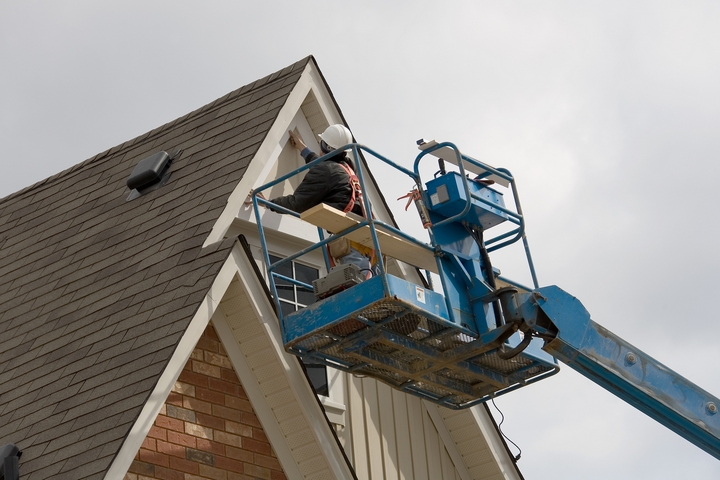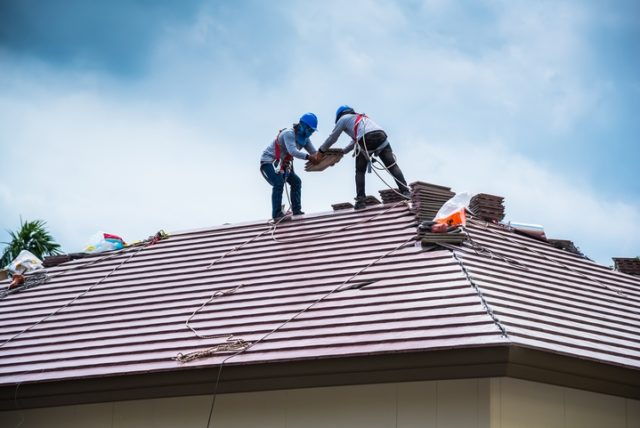Working on a commercial or residential roof is hazardous. Serious and even life threatening injury can occur if proper safety gear is not used while on top of the building and proper protocols are not followed. Most industries have health and safety guidelines in place that their employees must follow while on the job. Provincial legislation has also developed policies to ensure workers are performing their duties in a safe environment.
For those new to the business, or long term staff who are looking to update their knowledge on effective and injury reducing workplace habits, these tips will help you have a healthy and productive day when doing any roof-type work.
1. Weather

If the roof is wet from rain or frost, the shingles will be slippery making it more difficult to maintain your grip when walking on the top surface. The exterior materials should be dry, especially outer ceilings with an incline or slope.
Temperatures that are too hot or too cold can also cause health and other safety issues when working outside. The higher the outdoor temperature, the greater the risk of developing burns and other heat related injuries. Likewise, temperatures below freezing can cause frostbite, hypothermia, make it difficult to manipulate the fabrics.
2. Proper Footwear

Wearing improper footwear makes it difficult to get proper traction when working on high areas. When purchasing shoes to do your job, choose closed and steel-toed boots that fit properly. Strong, soft rubber soles with good grip will help your feet adhere to the work area so you can perform your duties effectively in one place.
3. Safety Gear

Safety gear are vital tools for doing any construction work. Equipment including fall arrest anchors, protective eyewear, harnesses, gloves, padding, safe straps, and other apparatus are essential when working off the ground. Always inspect your accessories before and after your work is complete to ensure they are in good working condition. Broken or damaged devices should be replaced immediately.
4. Ladders and Scaffolds

All climbing and elevation devices should be in excellent working condition and meet all government safety regulations. Inspect your equipment, ropes, rungs, hinges, locks and other features thoroughly before and after every shift to ensure the device is in excellent condition and capable of supporting your weight.
5. Lifting Devices

Many buildings will require the shingle bundles, plywood and other tools be manually lifted onto the top of the workstation. Proper lifting and safety practices must be practised at all times to avoid injury. If mechanical vehicles are used to transport and elevate the bundles, it is important to check the machinery regularly to make sure that they are working properly so you do not run into any malfunctions when they are holding the heavy loads.
6. Roofing Tools

Manual and power tools must be in good condition before the job is started. If an appliance breaks during the construction, replace it with a new or reliable product. Power tools require special care and need to be used properly to avoid injury. Nail guns for example, are essential time savers for professional contractors, but they can be very dangerous if not used with care. Ensure all safety features are applied and instructions on proper usage and care are followed.
Roofing maintenance is an essential job on commercial and residential structures. However, if proper safety procedures are not followed, it can also be very dangerous. Applying effective health and safety habits to your daily routine will help reduce your risk of serious and even life threatening injury when working high above ground.






